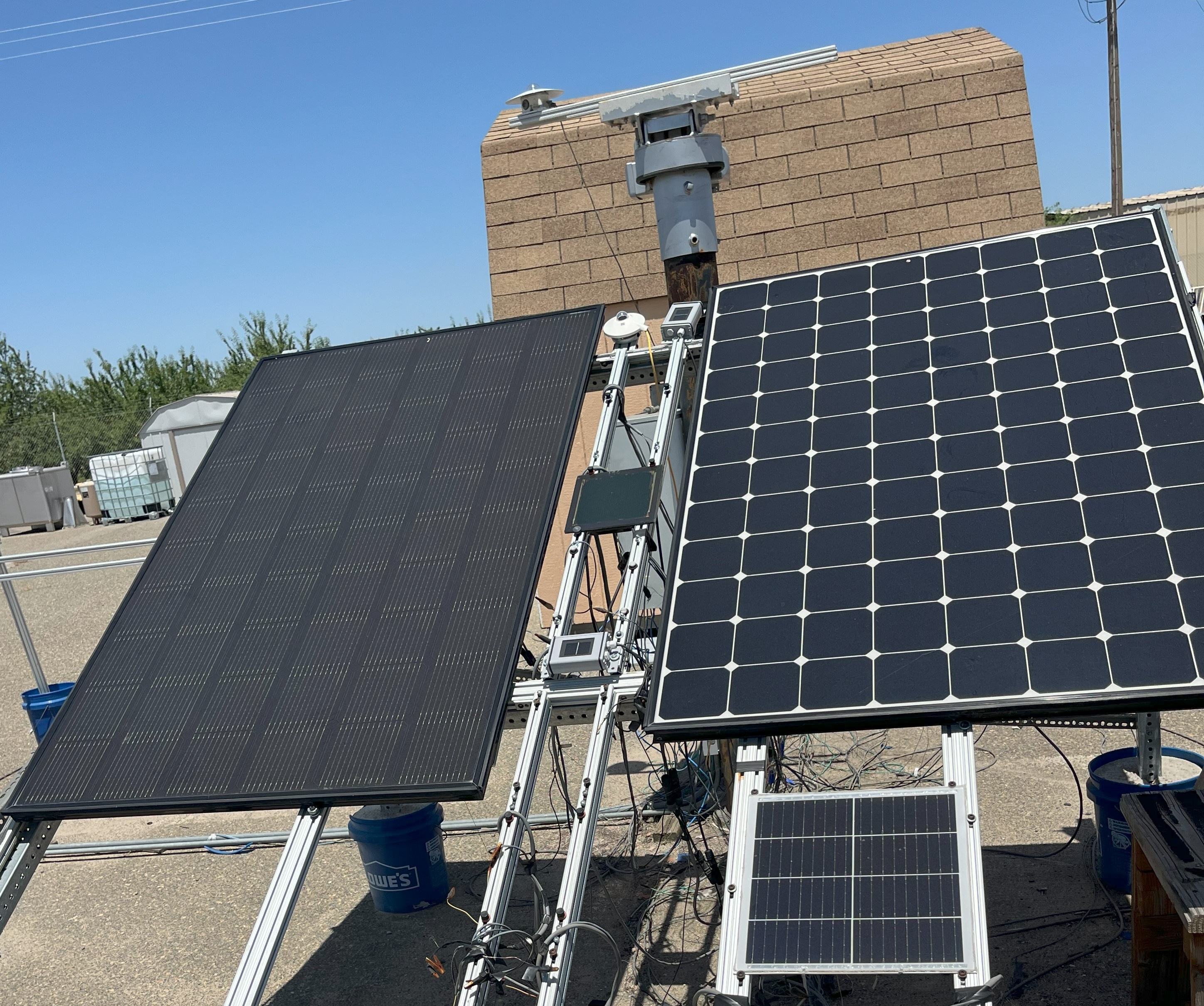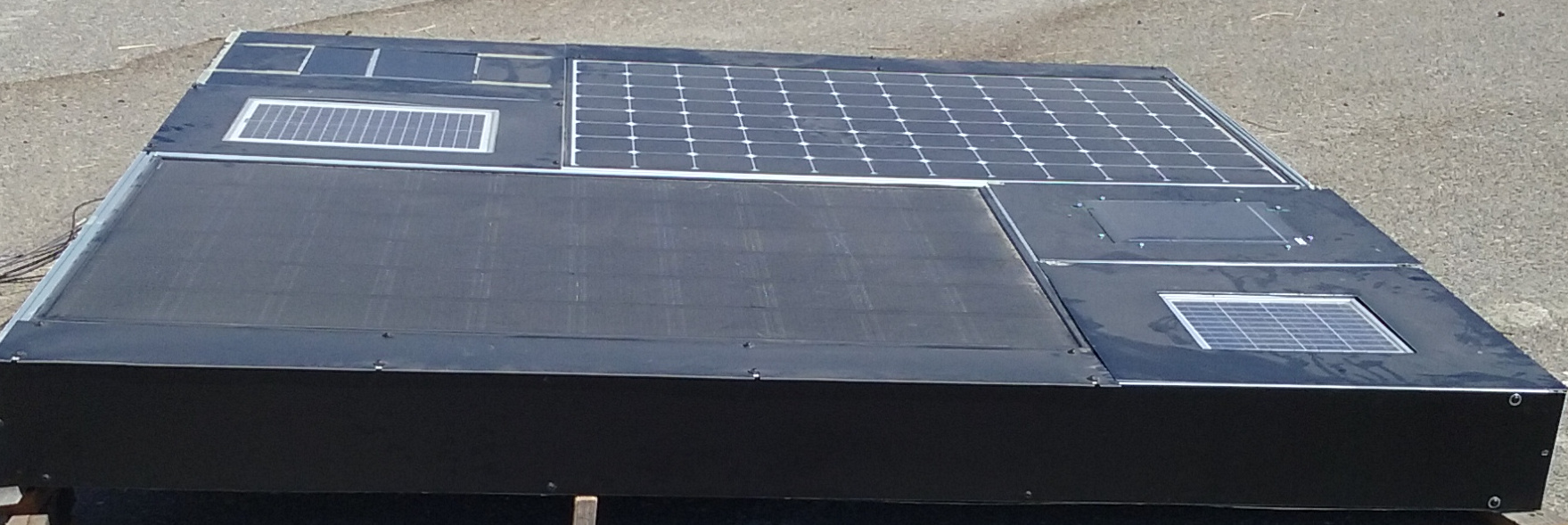Research at UC Merced
TEAMUP project
The TEAMUP project, Tandems for Efficient and Advanced Modules using Ultrastable Perovskites, aims to enhance the efficiency of tandem solar cells, which utilize multiple photovoltaic layers to capture a broader spectrum of sunlight. By stacking materials like silicon and perovskite, the project seeks to surpass the efficiency limits of conventional single-junction solar cells. Through collaboration with research institutions and industry, the project focuses on achieving breakthroughs in efficiency, reducing costs, and ensuring scalability for commercial use. Researchers work to optimize material combinations, improve stability, and address manufacturing challenges to make tandem solar cells more viable. Our lab is actively involved in the project, partnering with the University of Colorado Boulder and Swift Solar to improve the efficiency and scalability of tandem solar cells by using advanced laboratory techniques and simulation tools to enhance the performance of silicon-perovskite tandem cells, contributing to the global transition to renewable energy solutions.

Agrivoltaics
As solar energy grows rapidly, there is a growing need to deploy solar panels in locations already used for other purposes. Where we are located in the Central Valley of California, the primary use of land is for agriculture. We are installing an array of solar panels at UC Merced's Experimental Smart Farm and will be studying how the panels can optimally generate electricity while enabling high yields of the plants growing underneath.
We are currently (2025) seeking undergraduate students who are interested in studying agrivoltaics. If you are interested, contact skurtz@ucmerced.edu.
Outdoor performance of new solar technologies
We are currently partnering with the University of Colorado Boulder, Swift Solar and others in TEAMUP to study how new perovskite-on-silicon tandem solar panels perform outdoors.
We are currently (2025) seeking undergraduate students who are interested in TEAMUP. If you are interested, contact skurtz@ucmerced.edu.
California and many others around the world are undertaking to transition to a sustainable energy system. This is an exciting time, when new technologies are becoming cost competitive, but the challenge will be to quickly transition to these new technologies. Key to transitioning quickly will be to find the lowest cost path. We undertook to study different pathways for California, using such codes as RESOLVE and SWITCH. The results depend a lot on our choices, as described in the March issue of the MRS Bulletin "Revisiting the Terawatt Challenge." You can see our results at this website and this linked-in page. While the CEC project has officially ended, we are incorporating this work into our next studies.
Another element of understanding the energy transition is quantifying the performance of the new technologies. Our recent JPV paper describes how the performance of solar plants can be tracked with readily available data. See DOI: 10.1109/JPHOTOV.2020.2968418.
Solar Canals
We are partnering with Turlock Irrigation District and Solar Aquagrid to study solar canals with the goal of laying the groundwork for implementing solar canals widely in California. Read about it here. Brandi McKuen is leading this effort.
Guidelines for siting solar systems in CalTrans' Right-of-way
Working with California's Department of Transportation and with the Texas A&M Transportation Institute at TAMU, we explored use of solar in the diamond and clover-leaf areas near intersections along highways. While California already has about 70 solar installations at CalTrans facilities, such as at parking garages and train stations, the use of the land at interchanges is more difficult because of safety and other practical issues. This project explored how to streamline identification of the locations that will be practical implementations for solar. The project was completed in December 2020.
You may read the final report here.
Performance of solar panels
A few years ago, in partnership with Alta Devices, we deployed a variety of solar panels (including high- and low-efficiency silicon, as well as GaAs) on a black box. We explored the relative temperatures and relative performance to provide information for those who are selecting solar panels for use on cars, rooftops, and other surfaces. More recently, we have added perovskite modules for testing.
Two papers were presented at the 46th PVSC in June 2019:
Outdoor Performance of PV Technologies in Simulated Automotive Environments
Aaron J Wheeler, Michael Leveille, Ignacio Anton, Moritz Limpinsel and Sarah Kurtz.
and
Determining the Operating Temperature of Solar Panels on Vehicles
Aaron Wheeler, Michael Leveille, Ignacio Anton, Ashling Leilaeioun, and Sarah Kurtz.

Effects of soiling
In partnership with NREL and Envision Digital, we are exploring effects of soiling on the output of solar cells in order to better characterize soiling losses and identify when a sensor needs cleaning. A paper was presented at the 46th PVSC in June 2019:
Evaluating the Accuracy of Various Irradiance Models in Detecting Soiling of Irradiance Sensors
Zoe DeFreitas, Anthony Ramirez, Brian Huang, Sarah Kurtz, Matthew Muller, and Michael Deceglie.

The beautiful thing about renewable energy is that the more we use, the cheaper it gets, providing a pathway to prosperity for the whole world!


